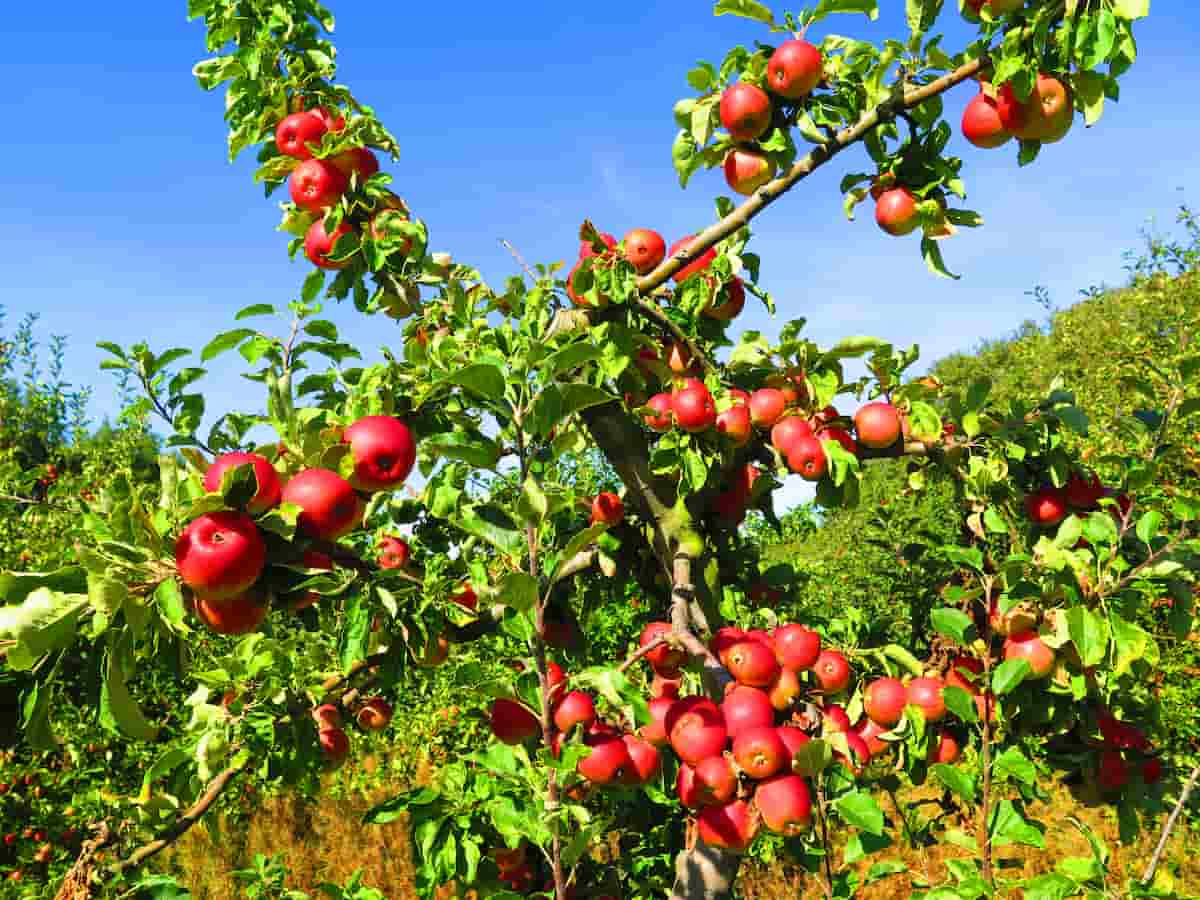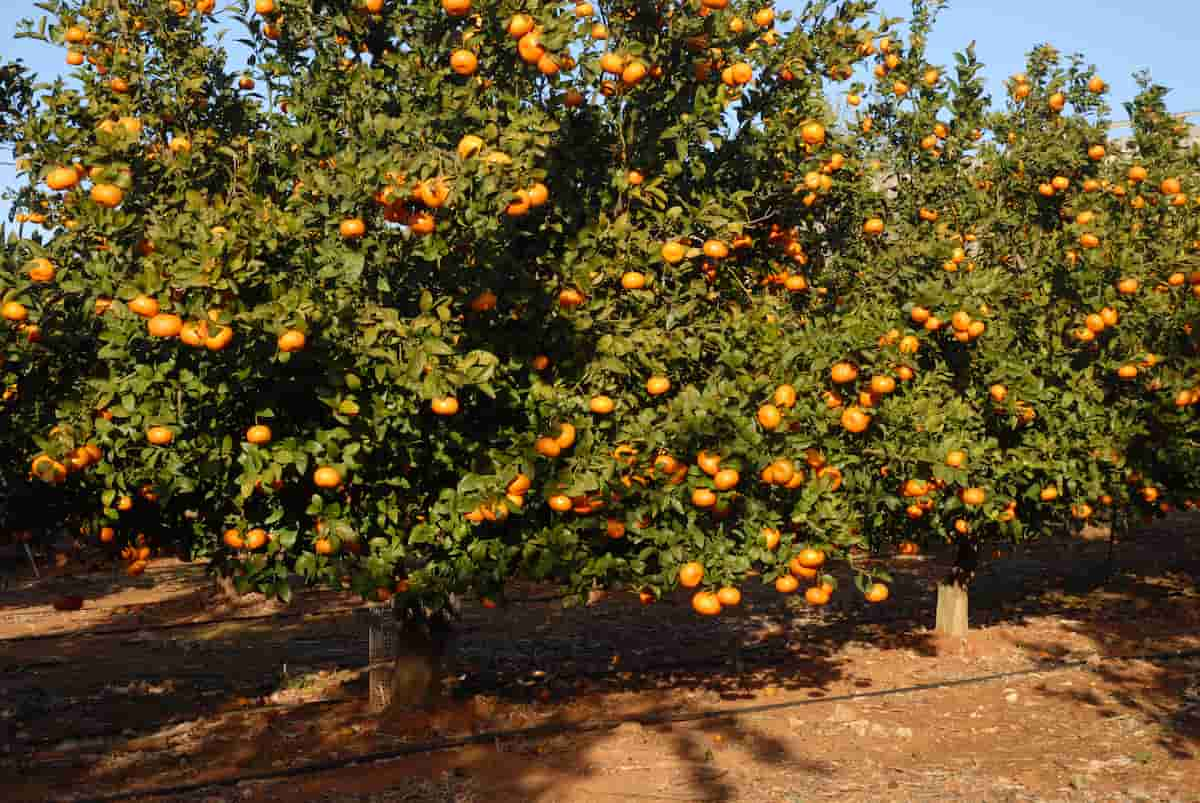Many inputs associated with modern farming are excluded from organic fruit production, including synthetic pesticides and fertilizers. To the greatest extent possible, organic farming relies on crop rotation, crop residues, animal manures, legumes, green manures, off-farm organic wastes, mechanical cultivation, and mineral-bearing rock powders. They contribute to soil productivity and tilth, as well as supplying nutrients to plants, as well as controlling insects and weeds.

How to Grow Fruits Organically
Steps Involved in Growing Fruits Organically
Site Selection
It is even more important for organic fruit operations to consider all site factors (air and water drainage, etc.). Organic farmers must also be mindful of weeds and forage species. Many grass species, such as Bermudagrass and Johnsongrass, can be problematic to farmers and difficult to control without using chemicals. Fruit crops can be grown safely and successfully on hillsides and other sites unsuitable for tillage agriculture because of the low erosion potential.
Choose & Buy Fruit Plants/Seeds According to Your Soil and Climate
Various environmental factors (climate, presence of certain pests and diseases, soil suitability, etc.) can influence the suitability of a given site or even a bioregion for organic fruit production. It is generally easier to grow some perennial fruits organically than others. In almost all locations, it is easier to grow small fruits (berries) organically than large fruits (trees). In addition, whether organic fruit is grown for home consumption or commercial sale can influence its success.
Land Preparation
The fundamentals of organic fertility management for fruits are nutritionally balanced soil, proper soil pH, and abundant organic matter. Typically, organic fruit planting soil improvement involves cover cropping, green manuring, and imported materials, including manures, compost, rock powders, and organic wastes.
Applying the required amounts of lime or sulfur at this stage is important. Lime or sulfur may be required based on soil testing results and the crop to be grown. It is much easier to adjust the soil pH before planting with lime (to raise the pH) or sulfur (to lower the pH). The pH range between 5.5 and 7.2 is best for fruit plants, but they can tolerate a pH range between 6.5 and 7.5.
Plant Seedlings or Sowing Seeds
Follow the seed packet label instructions for sowing the seeds on the prepared site. Seedlings should be planted in holes dug according to their roots’ size, then the roots should be placed gently in the holes and the soil backfilled. Plants should be watered well after planting, then mulched. Rubber strips or old tights can tie the tree to the stake (do not use string or wire, they will cut into the stem as it grows).
In case you missed it: How to Grow Apples Organically: A Step-By-Step Guide for Beginners

Water Requirements for Fruit Trees or Plants
A fruit tree’s growth, quality, and yield depend on irrigation water, particularly during the dry months. Water availability, particularly in arid and semi-arid regions, is a limiting factor in fruit cultivation. There may not be enough moisture in the root zone during the dry months, even in areas with high rainfall (>1500 mm). As a result of erratic rainfall patterns and the need for irrigation, crops can experience drought at any stage.
- A newly planted fruit tree needs lots of water to establish itself in the soil. For the first two growing seasons, a fruit tree’s rootball is typically kept moist and healthy by watering deeply once or twice weekly.
- The roots of mature fruit trees need to be thoroughly soaked regularly. It may not even need to be watered manually if you live in an area with decent natural rainfall. For fruit trees in Mediterranean climates, water more often when it’s hot, so they don’t wither or stop producing tasty fruit.
Organic Fertilization Practices on Fruit Trees or Plants
When cover crops and organic mulches are used in systems that use them, and lime and other slow-release rock powders are applied at the preplant stage, many fertility needs of fruit crops can be met. Nevertheless, supplementary fertilization is often necessary to ensure optimum growth and production. Compost, manures, cottonseed meal, feathers, and blood meal are some examples of organic fertilizer materials that are relatively insoluble.
Decomposition of these slow-releasing materials should begin in the spring to ensure timely nutrient release. Some organic fruit farmers use soluble organic fertilizers such as fish emulsion, soluble fish powder, or water-soluble blood meal to bypass some of the “problems” associated with slowly available organic materials.
Organic Mulching Around the Fruit Trees or Plants
After they are established, plants can be suppressed with mulch made from organic materials like straw, leaves, or sawdust. It may be possible to achieve complete suppression if the barrier is thick enough or complemented by sheets of paper or cardboard on the bottom. Mulch application varies somewhat by crop. Straw, fresh or old hay, forage or cover crops, chipped brush, wood shavings, tree leaves, cotton gin waste, rice or buckwheat hulls, and other crop residues are examples of organic mulch materials.
Organic mulches such as hay and straw are widely used in organic horticulture. Mulch should generally be kept well away from trunks to avoid vole damage. Winter is especially important for this. Mulch should also be kept 8-12 inches from the trunk to prevent crown rot and other diseases, especially on certain rootstocks. A sawdust mulch is typically spread along the entire row of mulberries, with extra sawdust piled around the canes to 8 inches or more depth. Mulching is beneficial for controlling weeds and improves the soil’s aggregation and water availability.
Organic Weed Management in Fruit Trees or Fruit Plants
New weeds can be prevented from being introduced onto the farm, and existing weeds can be prevented from producing large amounts of seeds. To greatly reduce the introduction of weed seeds and difficult weed species, use clean seeds, mow weeds around the edges of fields or after harvest, and compost the manure before application.
A selective hand-eradicate method can eliminate isolated outbreaks of new weeds, effectively preventing further infestations. Crop success depends on planting clean, high-quality seeds. In addition to thoroughly cleaning any machinery that may have been used in weedy fields, hedgerows can be established to limit the spread of windblown seeds.
In case you missed it: How to Grow Avocado Organically: A Step-By-Step Guide with Simple Steps

Organic Pest Management in Fruit Trees or Fruit Plants
Scale bugs can still be controlled by dormant oils (mineral or vegetable), aphids and scale can still be washed away with insecticidal soap, and various copper and sulfur concoctions can be made to control fungus. Rotenone and pyrethrin are naturally occurring insecticides that can be purchased separately or mixed.
A powerful deterrent against most bugs that eat leaves or fruit, rotenone (cube) comes from the roots of the tropical derris plant. Pyrethrin kills many bad bugs on contact and stuns or irritates others, so they leave the tree. In orchards, azadirachtin can combat young shoot aphids, hard-bodied weevils that bore into stems, and stem-sucking psyllid flies.
Conclusion
With careful planning and study, organic fruit growing can be successful and profitable. The organic grower is the key to successful organic fruit production. An organic grower must be willing to invest time and energy in an exhaustive investigation of the best organic crops and practices for a specific orchard site and continuing education and implementation of improved organic growing techniques.
- Ultimate Guide to Ossabaw Island Hog: Breeding, Raising, Diet, and Care
- Ultimate Guide to Juliana Pig: Raising Facts, Size, Diet, Care, and Lifespan
- Raising Lleyn Sheep: Disadvantages, Price, Uses, Characteristics, and Care
- Ultimate Guide to Meishan Pig: Breed Facts, Breeding, Raising, and Care
- Ultimate Guide to Teacup Pigs: Raising, Diet, Lifespan, Cost, and Care
- Guide to Raising Poll Dorset Sheep: Facts, Profile, Characteristics, Uses, and Care
- Ultimate Guide to Bighorn Sheep: Characteristics, Diet, Lifespan, Breeding, and Lifecycle
- Ultimate Guide to Raising Katahdin Sheep: Farming Facts, Breed Profile, Uses, and Care
- Ultimate Guide to Raising Oreo Cows: Belted Galloways Farming Facts, Profile, Uses, and Care